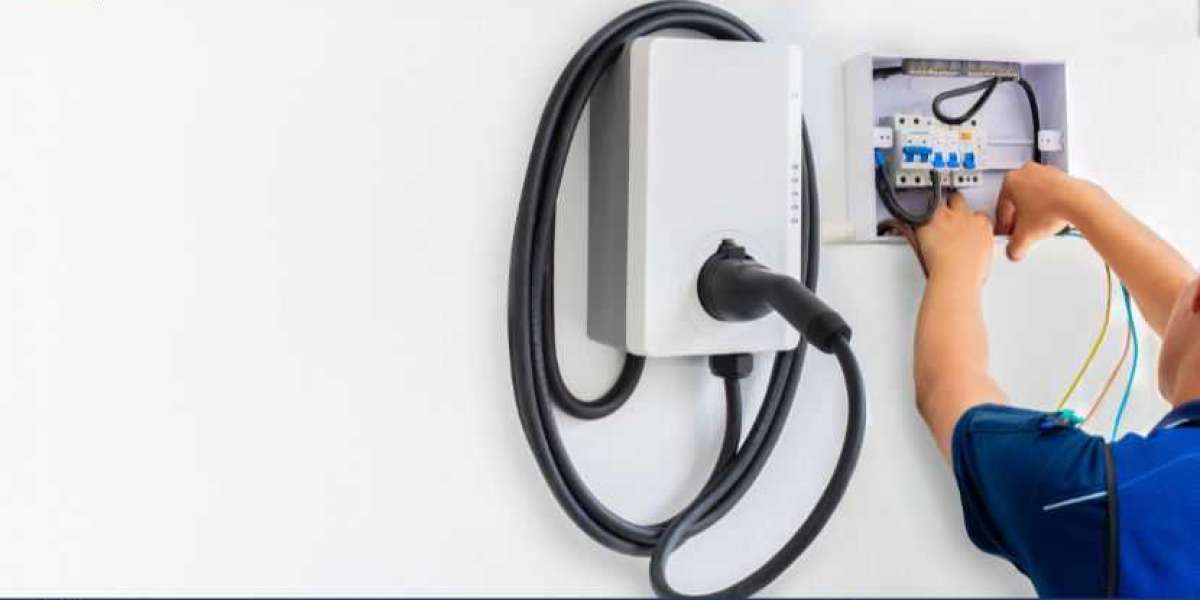The global smart home installation service market size has seen substantial growth in recent years, reaching a value of USD 4.83 billion in 2023. This market is projected to expand further at a compound annual growth rate (CAGR) of 23.2% from 2024 to 2032, potentially attaining a value of USD 31.52 billion by the end of the forecast period. This growth is driven by the increasing adoption of smart home devices, rising consumer demand for convenience and security, and technological advancements that make smart homes more accessible to the average consumer. This article delves into the market outlook, report overview, market size, dynamics, drivers, key challenges, segmentation, recent developments, component and end-user insights, regional analysis, key players, market trends, industry news, and application insights.
Market Outlook
The global smart home installation service market is set to witness robust growth over the forecast period, propelled by the rising integration of smart devices in residential settings. Consumers are increasingly turning to smart home solutions for convenience, security, and energy efficiency. This trend is supported by the growing proliferation of Internet of Things (IoT) devices, which are central to the smart home ecosystem.
The surge in demand for professional installation services is fueled by the complexity of these systems, as homeowners seek to ensure that their smart devices are installed correctly and function seamlessly. The market is expected to grow as more consumers invest in smart technology, spurred by the increasing availability of affordable smart home devices and systems.
Report Overview
This report offers a comprehensive analysis of the global smart home installation service market, covering various aspects such as market size, dynamics, key drivers, challenges, segmentation, and regional insights. The report also provides an in-depth examination of recent developments, key players, market trends, and application insights, along with long answers to six frequently asked questions (FAQs).
Market Size
The smart home installation service market reached a value of USD 4.83 billion in 2023, reflecting the growing consumer interest in smart home technologies. With a projected CAGR of 23.2% from 2024 to 2032, the market is expected to expand significantly, reaching approximately USD 31.52 billion by 2032. The increasing adoption of smart devices, coupled with the need for professional installation services, is driving this growth.
Market Dynamics
Market Drivers
Rising Adoption of Smart Devices: The growing popularity of smart devices such as smart thermostats, security cameras, lighting systems, and voice assistants is driving the demand for professional installation services. As consumers continue to embrace smart home technologies, the need for expert installation services is becoming increasingly critical to ensure that these devices function optimally.
Increased Focus on Home Security: Security concerns are a major driver of the smart home market. Consumers are investing in smart security systems, including cameras, alarms, and door locks, which require professional installation to ensure they are set up correctly and provide maximum protection.
Demand for Energy Efficiency: Smart home devices can significantly reduce energy consumption, which is a key selling point for environmentally conscious consumers. The demand for energy-efficient solutions is driving the installation of smart thermostats, lighting systems, and other energy-saving devices.
Convenience and Connectivity: The desire for convenience and connectivity is leading to the adoption of smart home systems that can be controlled remotely via smartphones and voice assistants. This trend is contributing to the growth of the smart home installation service market, as consumers seek professional help to integrate these systems into their homes.
Key Market Challenges
High Installation Costs: The cost of professional installation services can be a barrier for some consumers, particularly those who are budget-conscious. While the prices of smart home devices have become more affordable, the cost of installation remains a challenge.
Privacy and Security Concerns: The increasing connectivity of smart home devices raises concerns about data privacy and security. Consumers are wary of potential hacking and data breaches, which can deter them from adopting smart technologies.
Compatibility Issues: The integration of multiple smart devices from different manufacturers can be challenging due to compatibility issues. This complexity can lead to difficulties during installation, requiring professional expertise to ensure that all devices work together seamlessly.
Segmentation
The global smart home installation service market can be segmented based on product type, service type, end-user, and region.
By Product Type
Security and Surveillance Systems: This segment includes the installation of smart cameras, alarms, and door locks. The growing focus on home security is driving demand in this category.
Smart Lighting Systems: This segment covers the installation of smart bulbs, switches, and lighting controls. Energy efficiency and convenience are key drivers for this segment.
Smart Thermostats: The installation of smart thermostats, which help regulate home temperatures and reduce energy consumption, falls under this category.
Home Entertainment Systems: This segment includes the installation of smart TVs, audio systems, and streaming devices, driven by consumer demand for enhanced entertainment experiences.
Others: This category includes the installation of other smart home devices such as smart appliances, voice assistants, and home automation systems.
By Service Type
Installation Services: This includes the setup and installation of smart home devices and systems by professional technicians.
Consultation Services: This segment covers consultation services where experts provide advice on selecting and configuring smart home devices.
Maintenance and Support Services: This includes ongoing maintenance, troubleshooting, and support for smart home systems.
By End-User
Residential: The residential segment is the largest end-user of smart home installation services, driven by the growing adoption of smart devices in homes.
Commercial: The commercial segment includes the installation of smart systems in offices, retail spaces, and other commercial establishments.
Recent Developments
Technological Advancements: Recent advancements in AI and machine learning are enabling smarter and more intuitive home automation systems. These technologies are being integrated into smart home devices, making them more user-friendly and increasing demand for professional installation services.
Partnerships and Collaborations: Key players in the smart home installation service market are forming partnerships with smart device manufacturers to offer bundled services. These collaborations are helping companies expand their service offerings and reach a broader customer base.
Expansion of Service Offerings: Companies are expanding their service offerings to include consultation, maintenance, and support services, in addition to installation. This trend is helping companies differentiate themselves in a competitive market.
Component Insights
Hardware: Hardware components include smart devices such as cameras, thermostats, and lighting systems. The demand for these devices is driving the need for professional installation services.
Software: Software components include the apps and platforms used to control smart home systems. The complexity of these systems often requires professional setup and configuration.
Services: This segment includes installation, consultation, and maintenance services provided by smart home installation companies.
End-user Insights
Residential: The residential segment is the largest end-user of smart home installation services, driven by the growing adoption of smart devices in homes.
Commercial: The commercial segment includes the installation of smart systems in offices, retail spaces, and other commercial establishments.
Regional Insights
North America: North America is the largest market for smart home installation services, driven by high consumer adoption of smart devices and a strong focus on home security.
Europe: Europe is another significant market, with growing demand for energy-efficient solutions and smart home technologies.
Asia-Pacific: The Asia-Pacific region is expected to witness significant growth, driven by increasing urbanization, rising disposable incomes, and growing awareness of smart home technologies.
Latin America: The market in Latin America is also expanding, with increasing adoption of smart devices and a growing middle class.
Middle East and Africa: The market in the Middle East and Africa is still emerging, but it is expected to grow as awareness of smart home technologies increases.
Key Players
Miami Electric Masters: A leading provider of smart home installation services in the United States, offering a range of services including installation, consultation, and maintenance.
Red River Electric Inc.: A key player in the smart home installation market, known for its expertise in electrical systems and smart home integration.
Rexel: A global distributor of electrical products and services, including smart home installation services.
Insteon: A leading provider of smart home devices and installation services, known for its innovative home automation solutions.
AutoDeus Technologies Private Limited: A key player in the Indian market, offering smart home installation services and automation solutions.
Vivint, Inc.: A major player in the smart home security market, providing installation services for a wide range of smart security devices.
HelloTech, Inc.: A US-based provider of on-demand tech support and smart home installation services.
Handy Technologies, Inc.: A leading platform for home services, including smart home installation, maintenance, and support.
Market Trends
Growing Demand for Smart Security Systems: The demand for smart security systems is driving growth in the smart home installation service market. Consumers are increasingly investing in smart cameras, alarms, and door locks, which require professional installation.
Rising Adoption of Smart Lighting Systems: Energy efficiency and convenience are driving the adoption of smart lighting systems, leading to increased demand for installation services.
Integration of AI and Machine Learning: The integration of AI and machine learning into smart home systems is making them more intuitive and user-friendly, driving demand for professional installation services.
Industry News
Vivint, Inc. Expands Smart Home Security Offerings: Vivint recently expanded its smart home security offerings, introducing new products that require professional installation, including advanced cameras and alarm systems.
Rexel Partners with Smart Device Manufacturers: Rexel announced a partnership with leading smart device manufacturers to offer bundled installation services, helping customers set up their smart home systems with ease.
HelloTech, Inc. Launches On-Demand Smart Home Installation Services: HelloTech recently launched on-demand smart home installation services, allowing customers to book professional installation services at their convenience.
Application Insights
Home Security: Smart home security systems are one of the primary applications driving demand for installation services. These systems provide enhanced security and peace of mind for homeowners.
Energy Management: Smart home devices such as thermostats and lighting systems help homeowners manage energy consumption, reducing costs and environmental impact.
Home Automation: Home automation systems allow homeowners to control various aspects of their home, including lighting, temperature, and security, from a single platform.
FAQs
What is the projected growth rate of the global smart home installation service market?
- The market is expected to grow at a CAGR of 23.2% between 2024 and 2032.
What are the key drivers of the smart home installation service market?
- Key drivers include the rising adoption of smart devices, increased focus on home security, demand for energy efficiency, and the desire for convenience and connectivity.
What are the challenges facing the smart home installation service market?
- Challenges include high installation costs, privacy and security concerns, and compatibility issues among different smart devices.
Which region is expected to witness the highest growth in the smart home installation service market?
- North America is expected to lead the market, followed by Europe and Asia-Pacific.
Who are the major players in the global smart home installation service market?
- Major players include Miami Electric Masters, Red River Electric Inc., Rexel, Insteon, AutoDeus Technologies Private Limited, Vivint, Inc., HelloTech, Inc., and Handy Technologies, Inc.
What are the emerging trends in the smart home installation service market?
- Emerging trends include the growing demand for smart security systems, rising adoption of smart lighting systems, and the integration of AI and machine learning into smart home systems.



